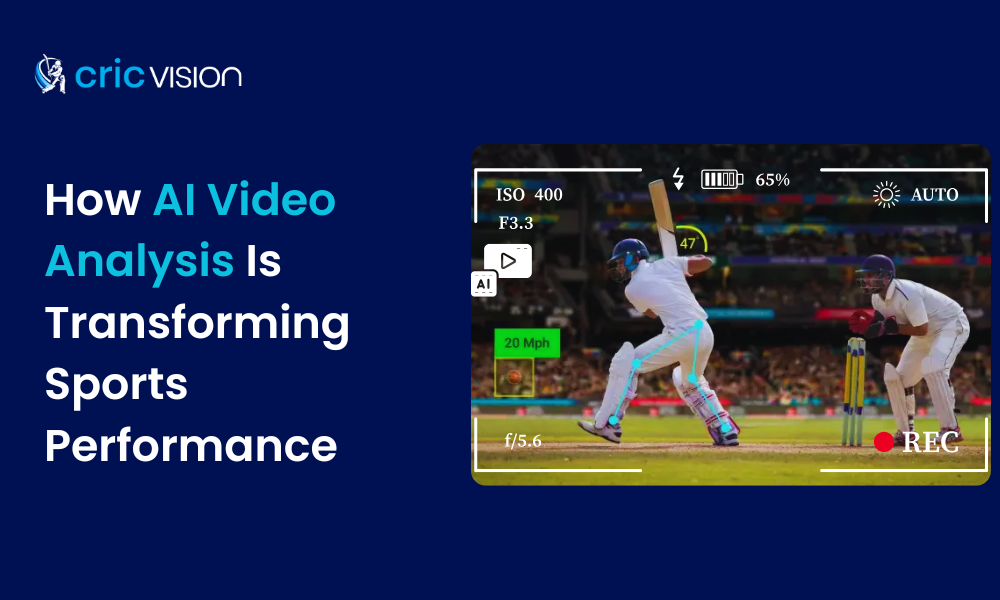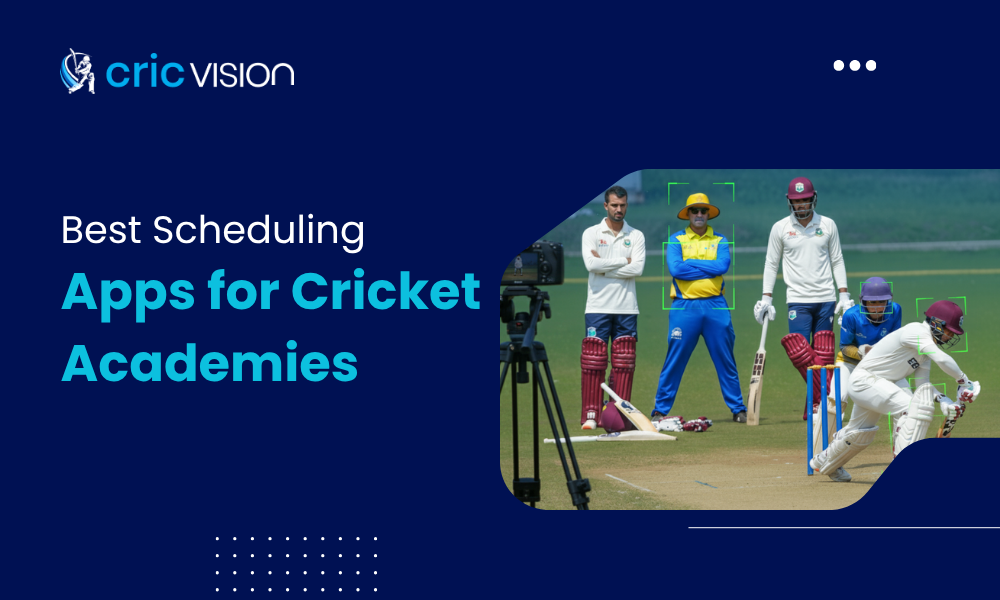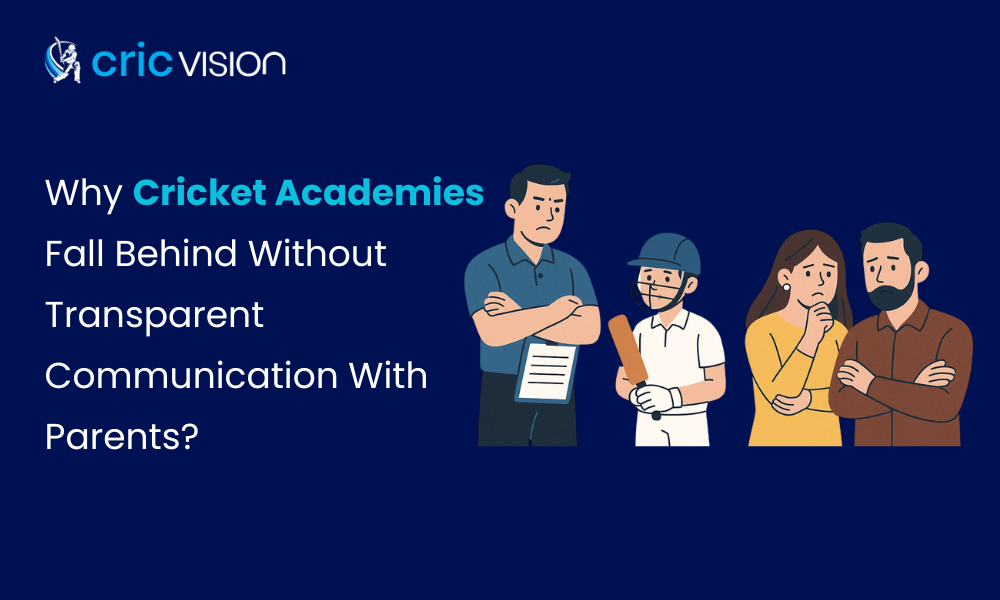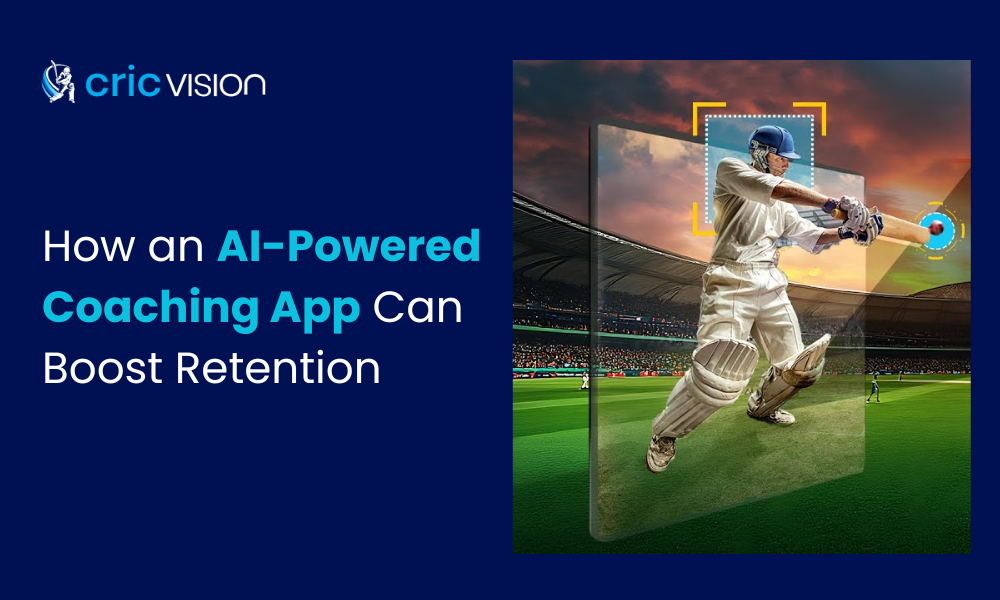Sports analysis has entered a new phase where you’re not just watching a replay. You’re interpreting the numbers behind every movement. With AI video tools, you can now spot what earlier went unnoticed: a basketball player’s release position, a batsman’s timing change, or an athlete’s fatigue trend.
These insights strengthen your coach’s instincts and help you make more precise decisions in less time. This guide will show you why such AI video tools matter now, where these tools are used, and what the next few years hold for your setup.
Why AI Video Analysis Will Matter More Than Ever in 2026
AI video analysis has already started to shift how you train, scout, and strategize.
- But what’s coming for you in 2026 will make it inevitable.
You’ll not just review the play; you’ll anticipate outcomes. The tech is moving from supportive to strategic partner for your coaches, spotting subtle patterns in technique, fatigue, and decision-making that traditional review can’t reliably catch.
- The most significant shift is speed.
What took days of video analysis is moving toward near-real-time, helping you adjust field placement, manage player load, or change tactics mid-session. And it’s going mainstream: The global market of ‘AI in Sports’ is expected to reach $2.61 billion by 2030, with a CAGR of 16% between 2025 and 2030.
By 2026, using AI-driven video tools won’t be optional. It’ll be essential for staying competitive.
But, how does it look in the real world?
Let’s break it down into seven real-world use cases where AI-driven video analysis is already changing the game.
7 Real-World Use Cases of AI-Driven Video Performance Analysis in Sports
You’ve seen what AI can do in theory, but what about when your athletes are on the field, sitting inside the dugout, or relaxing in the pavilion? Teams today aren’t just recording footage. They’re using AI to sharpen reviews, improve coaching, and speed up decision-making.
Here’s where you’ll see it in action, and how it will shape your setup in the coming months.
1. Auto-Tagging That Turns Raw Footage into a Searchable Timeline
You no longer need to spend hours running through a match like watching a film. AI can automatically tag the turning points in the game, like wickets, goals, or tackles, and organize them into a searchable timeline. That means your video sessions are faster, smarter, and easier to navigate.
Real World Scenario: If you’re in cricket, you can instantly review every yorker bowled in the death overs. If you’re coaching a football team, you can filter every third-down conversion or red-zone play. You’ll spend less time searching and more time strategizing.
2. Pose-Based Technique Coaching That Makes Cues Stick
Your coach can tell you what went wrong. But it’s hard to make that advice stick without visual proof.
AI video tools make it easier by tracking your athlete’s movements and showing exactly where their form changes or slips. This helps them understand mistakes visually and repeat the right movement more consistently.
Real World Scenario: You can show a baseball pitcher where their elbow angle is changing under fatigue, or a fast bowler when their wrist position is dipping late in the spell. Your athletes learn faster because feedback becomes visual, clear, and instantly actionable.
3. Object Tracking & Trajectory Easing the Decision-Making Process
Watching a ball’s movement is easy. But understanding why it moved that way is what really matters.
AI helps you break that down by tracking the ball or any object in 3D, measuring its speed, spin, and flight path. You get to see how each movement affects player reactions and decisions in real time.
Real World Scenario: In basketball, you can study the perfect shot arc and landing angle to help your players improve accuracy. In cricket, you can see how the seam, swing, or bounce changes delivery by delivery of a bowler. This helps batsmen read the ball earlier and make better shot decisions.
4. Tactical Scouting that Athletes Will Actually Watch
Long film sessions lose your athletes’ attention. AI solves this by creating short, personalized highlight reels, focused on their position, habits, and opponents. Athletes engage well with these highlights because the feedback is relevant and instantly actionable.
Real World Scenario: You can send a basketball guard a 90-second breakdown of his turnovers under pressure, or give a soccer midfielder quick clips of transitions they missed.
5. Reaction Time for Keepers, Defenders, and Fielders
In reactive roles, even a split second can change the outcome of a match.
AI helps you measure how quickly your athletes move, the path they take, and how efficiently they recover their position. It removes the guesswork coaches usually make when scrolling through long video clips with quick, accurate reaction metrics you can trust.
These numbers usually show you where your athletes are losing time, and where they can get faster.
Real World Scenario: If you’re training a cricket wicketkeeper, you’ll see how quickly they get into position and react to an unexpected change in the ball’s movement. In football, you can measure how fast a cornerback turns and moves to cover a receiver.
6. Workload Signals & Early Injury-Risk Flags
You can’t always see fatigue building up, but AI can.
It tracks how much your athletes move, how their posture changes, and whether one side of the body is working harder than the other. When something looks off, it flags it early so your coach can act before it turns into an injury.
Real World Scenario: You might notice a bowler’s follow-through getting shorter as their workload increases, or a basketball player whose landing mechanics start to change after repeated jumps.
7. Talent Identification Beyond Traditional Metrics
Stats won’t always reflect an athlete’s true potential.
AI looks beyond numbers by analyzing how an athlete moves, how quickly they adapt, and how well they read space. This helps you spot young talent earlier, even before their performance starts showing up on the scoreboard.
Real World Scenario: AI-driven video analysis platforms flag a basketball player who reads the game well and makes good decisions, even if they aren’t scoring much yet. In cricket or college football, it highlights players with reliable mechanics and strong composure, the early signs of athletes who grow into top performers.
Once you start using AI video analysis in your daily coaching flow, you quickly realize something: this is just the beginning.
The next wave of AI video analysis is about to unlock features that go far beyond tagging film or correcting technique.
The Road Ahead: What AI Video Analysis Will Unlock Next (2026–2030)
You’ve mastered the current layer of AI video analysis. It’s time to check out the breakthroughs that will change how you train, decide, and manage performance between 2026 and 2030.
1. Personalized Training Programs Generated Automatically
AI video analysis tools will, going forward, create tailored micro-training plans for your athletes based on their movement patterns, workload, and progression rate.
You’ll get drill suggestions, session structures, and recovery routines aligned with the athlete’s needs in real time.
2. Live Tactical Nudges During the Live Game
Instead of reviewing footage after the game is over, you’ll receive live tactical prompts during the live game. Like,
- field adjustments
- shot-placement insights
- matchup recommendations
- fatigue alerts
AI will help you make decisions in the moment, not after.
3. Emotion & Body Language Tracking
Beyond biomechanics, AI video analysis tools will pick up non-verbal cues such as:
- Hesitation in shot selection
- Dip in confidence
- Signs of mental fatigue
- Increased hesitation under pressure
This helps you manage player mindset.
4. Seamless Integrations with Wearables & GPS
Wearables give you an idea of an athlete’s internal load. The video shows the pressure developed by the external load. In the coming years, both will merge into one continuous feedback system, giving you a complete 360° view of athlete performance without toggling between tools.
5. Injury Predictions Before Weeks
AI tools will cross-reference video movement data with workload patterns to predict injury risk weeks before it occurs. You’ll be able to intervene earlier, resting or adjusting an athlete’s intensity long before stress turns into body strain.
As per our prediction, by 2030, sports academies like yours will use AI tools to build, manage, and optimize the entire coaching ecosystem.
How CricVision, an AI Cricket Coaching App, Fits When the Focus is Cricket?
You’ve seen where AI video analysis is headed. For cricket, it means one thing: you need a tool that understands the details of your game. That’s where CricVision fits in.
- It’s built to help you break down bowling actions, batting movements, ball behavior, and fielding reactions with the accuracy your sport demands.
- Whether you’re reviewing every delivery, tracking fatigue across spells, or helping batsmen improve timing and decision-making, CricVision gives you insights tailored to cricket, and not just a list of generic analytics.
- It becomes the coaching layer that understands how you train, how your players develop, and how to turn daily training footage into simple, cricket-ready clips you can use in your next session.
Level up your game-start a free trial today. Download the app on Android or iOS.
Closing Note: Before Your Athlete/Team Steps Back On the Field
As you bring AI video analysis into your training and performance system, remember this: AI isn’t replacing your coach’s intuition; it’s sharpening it. Your coach’s instincts during and after the game still lead every decision. AI tools simply give you the clarity, speed, and evidence to act with more confidence than ever.
Sports aren’t just physical contests anymore. It is becoming smarter, with a data-driven chessboard shaping every move and decision you make on the field.

Frequently Asked Questions
1. How is AI video analysis different from traditional video review?
Traditional review is manual and time-consuming. AI tags moments automatically, tracks patterns, and gives you insights instantly, saving hours of review time.
2. Which AI technologies are used in sports video analysis?
Mostly computer vision, pose estimation, and machine learning. They work together to track movement, analyze technique, and spot trends.
3. Is AI video analysis only functional for professional teams?
No. Academies, universities, clubs, and even individual coaches use AI tools. In short, if you review footage, AI can help.
4. Can AI really understand emotions or mental fatigue in players?
AI doesn’t “feel” emotions yet. But it detects signs like hesitation, posture shifts, and slower reactions, the early clues of mental fatigue.
5. How accurate are AI-driven insights?
AI is extremely consistent. Your coach’s intuition + AI precision often gives the most accurate results.
6. Can AI analysis work in real-time during live matches?
Yes. Modern tools can tag events and send insights in near real time, helping you adjust strategy during the game.
7. How is player privacy handled when using AI video tools?
Footage is stored securely with encrypted access and clear permissions. Only authorized staff can view or analyze player data.
If you’re ready to combine your coaching instincts with the accuracy that AI tools provide, get in touch with us.





